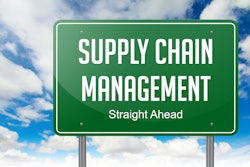
January 2024, when the first major sustainability regulation (EU’s CSRD) comes into effect, is a watershed moment because we must move from the theory of sustainability to the practice of sustainability. We are at the proverbial starting line. It’s time to take stock of the reality in front of us and decide if and how to act.
Sustainability Has Entered the Consumers’ Consciousness
Without question, sustainability is primarily driven by incoming regulations. But that should not mask growing consumer concern about the impact of climate change – a concern that will convert to purchasing behavior.
- 64% of global consumers and 53% of American consumers are very or extremely concerned about environmentally sustainability.
- 42% of US consumers were directly affected by severe weather in 2022; 79% of them believe climate change was a root cause.
- Those sentiments and experiences are already translating to consumer behavior: US consumers are willing to pay 11% more for sustainability products.
- And the economic toll is becoming stark: the cost of severe weather in the US is $1B every 3 weeks (vs $1B every 3 months just a decade ago).
Sustainability will become an increasing factor in the 70% of consumer economic activity that drives the US economy. Beyond regulations, it will become an unavoidable business dynamic.
Let’s Recognize the Unwelcome Guest at the Door
Let’s be honest, sustainability may seem more like an unwelcome guest than a key part of your mission or fiduciary responsibilities. For most companies, it is not part of the strategy, not in the budget, and not a core competency. It is an unfamiliar distraction to your operations that have already withstood Covid, supply chain disruption, and inflationary pressures.
Although regulations make sustainability “real”, they only affect a small percentage of companies – mostly large public and private companies. The real issue is the effect of Scope 3 emissions (that is emissions from regulated companies’ value chains, including upstream from suppliers, and downstream, from product use and disposal).
For example, California’s Climate Corporate Data Accountability Act (CCDAA) is expected to directly affect roughly 5,200 companies. But the commercial impact will affect every company operating in those companies’ supply chains – meaning that every small and mid-sized company doing business with the 5,200 directly affected companies are now impacted by sustainability because the larger, regulated companies are now scrutinizing the emissions associated with their entire value chain.
For those companies, the issue is not regulatory compliance, it is commercial pressure that translates to financial risk. And there are several key reasons why Scope 3 will be high on the agenda for regulated companies – and therefore, more immediately at your door:
- Emphasis on Scope 3 Emissions: Identified as the largest pool of emissions (72%) Scope 3 emissions become a priority for regulated companies and they therefore exert pressure on their value chain to manage these emissions because doing so has minimal impact on regulated companies financially and operationally.
- Influence of Shadow Carbon Pricing: The maturation of shadow carbon pricing essentially financializes carbon, making it easier for companies to quantify the cost impact of carbon emissions, including those from their suppliers.
In short, your large downstream customers will look to you to tell them what your emissions are, the strategies and programs you have in place to reduce emissions, and your expectations for emissions reductions. In practical terms, sustainability will increasingly influence procurement decisions. You may already be receiving ESG/sustainability questionnaires from your procurement department that are a precursor to RFP and contract language (if not, expect them soon enough).
Managing the Sustainability Dip
Sustainability risk is rapidly evolving as regulations come into effect, as downstream companies ramp up sustainability operations, and as Scope 3 increasingly translates into financial risk to you.
Although unique in some ways, sustainability as a disruptive force shares a key characteristic with other large-scale disruptions (Covid, supply chain disruptions, the mobile and tech revolution, etc) – it causes a performance dip as organizations allocate unexpected resources and operations are forced to adapt to new processes and practices. “Managing the dip” should be a primary design point for organizations working on how to address sustainability. What prior best practices have taught us is that speed matters: organizations that respond early to disruptive dynamics spend less and realize a shallower and shorter performance dip. Organizations that defer action, (ironically) face a deeper and longer performance dip – and often must overspend to recapture market share. This dynamic may be more acute in sustainability since it is outside your core business today, you will need time to build up acumen and practices that synchronize with how you run your operations.
The recommendation is not to take immediate action. Sustainability does not exist in a vacuum and there are other priorities that likely demand your attention. The recommendation is to decouple planning from action – but start planning now. This enables you to:
- Ensure you and the team are comfortable with the sustainability regulations, including what Scope 1, Scope 2, Scope 3, and carbon credits mean, and how shadow carbon pricing work
- Model risks so you can translate sustainability to financial and operational risks
- Integrate risks into current financial models and assumptions so you can understand what is truly at stake
- Work through different options to integrate sustainability practices into core operations to best enable you to keep your operations in balance.
An example of how this may play out is that in addressing looming Scope 3 pressures, you can determine how much of that you can pass onto your current vendors. You will need time to determine if your current suppliers can absorb your Scope 3 demands, or if an alternative supplier can better deliver reduced emissions at favorable price points.


















